‘Worth’ is a biographical drama set in the aftermath of 9/11 and follows Kenneth Feinberg (Michael Keaton), an attorney assigned to be the Special Master of the U.S. government’s September 11th Victim Compensation Fund. Having worked with high-profile compensation cases in the past, Kenneth attempts to use his usual tried and tested tactics but soon finds that his detached approach is not successful with the deeply aggrieved families of the victims. With barely enough time to get the requisite 80% of the victims on board, the government representative realizes that he must change his tactics. But does he succeed? And do the victims’ families accept what the fund offers? Let’s dig into the dramatic ending of ‘Worth.’ SPOILERS AHEAD.
Worth Plot Synopsis
The film opens with Ken (as he is referred to) leading a lecture where he poses the question — what is the value of a single human life? Following the discussion, in which the students come up with a value of between 2-3 million dollars, he concludes that, unlike in philosophy, in law, human life can be assigned a number. We are then introduced to Ken’s professional life as a well-known and ambitious mediation and dispute resolution attorney.
Shortly after the 9/11 tragedy occurs, he is called into a government meeting with the heads of airline companies to discuss the potentially disastrous result of the victims suing the airlines, which threatens to severely damage the economy. To counter that from happening, they decide to set up a government fund for the victims, which, if they voluntarily sign up for, will bar them from pursuing legal action against the airlines. It is widely recognized that heading the fund is an unenviable task, but Ken — mostly out of ambition — asks for and is given the post of the Special Master of the fund.
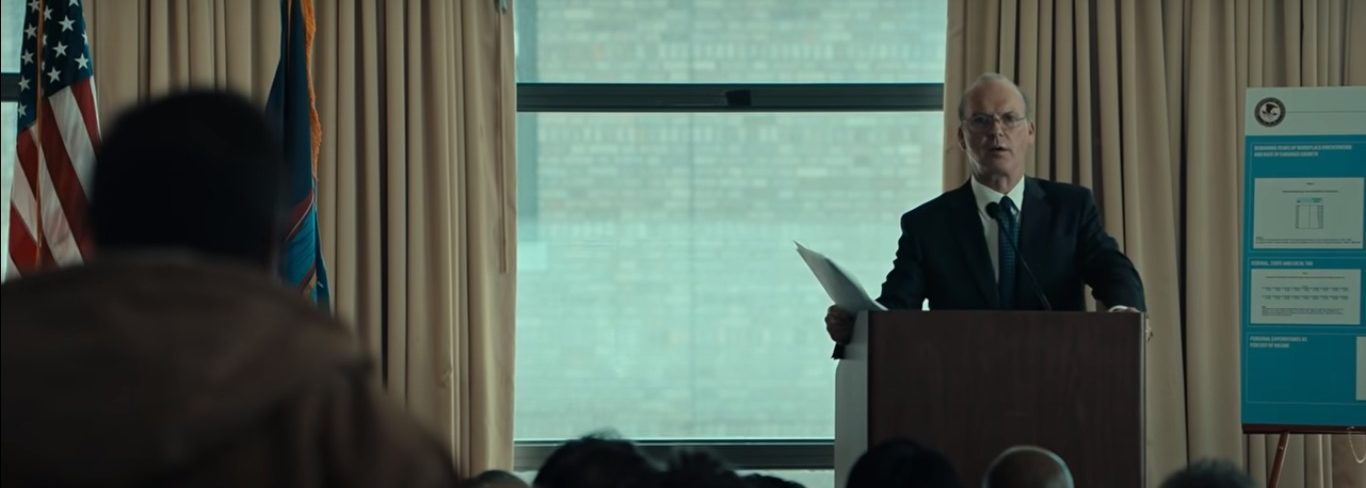
Along with his professional partner Camille Biros, he then delves into the case along with other members of the legal agency they run together. The post of the Special Master essentially gives Ken the freedom (and responsibility) to calculate and put a value on the suffering of the victims’ families, for which he devises a formula. However, at the first meeting with the families of victims and first responders who perished due to the tragedy, he is widely criticized for being heartless and not taking their grief seriously.
At the end of the meeting, Ken strikes up a conversation with Charles Wolf, an exceedingly polite widower who lost his wife in the tragedy and claims to be one of Ken’s harshest critics. The attorney then realizes that during their conversation, Charles has also been handing out flyers publicizing his website Fixthefund.org.
Worth Ending: Do the Victims and Their Families Accept the Fund?
Faced with the overwhelming pressure to collect the requisite 80% of victim signatories for the fund to work and stave off economic disaster — and with only months left until the deadline for families to sign up — Ken finally holds a meeting with Charles, who has rallied significant support in his motions against the fund. Charles merely tells Ken that something needs to change, and the latter finally realizes that he will have to look at the victims’ cases individually instead of seeing them all as numbers.
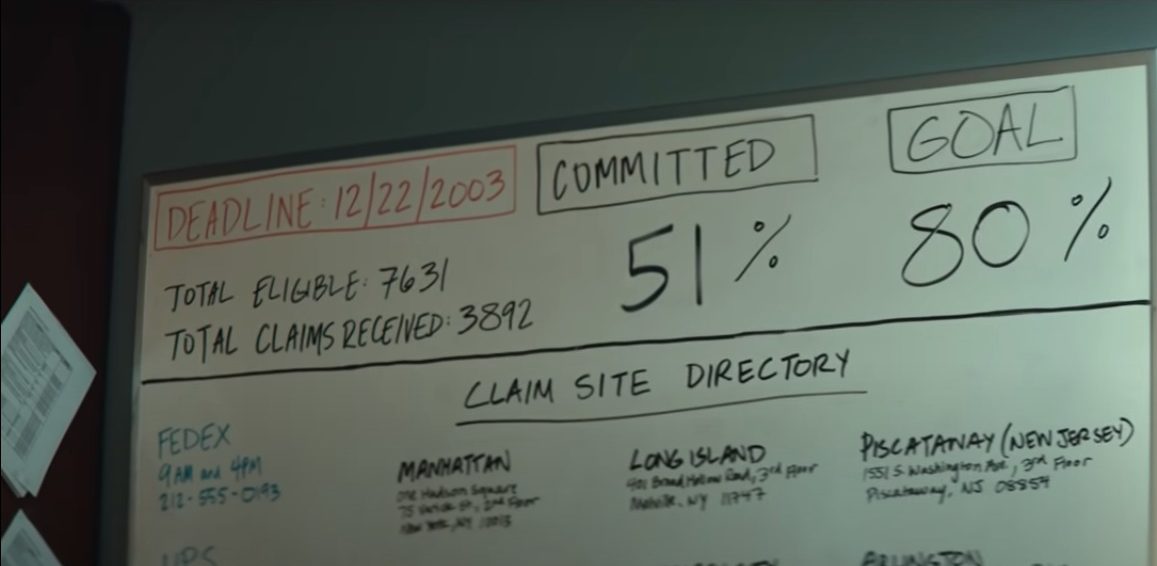
Rallying his team, Ken begins to study and reach out to each of the victims’ families but is only able to bring the signatories up to 36%, with a mere 3 weeks left until the deadline. The lawyers of wealthy victims, led by another attorney named Lee Quinn, meanwhile pressurize Ken to raise the amounts being granted to their clients. When Ken subtly points this out to Charles, the widower finally decides to support the fund and begins to spread the word that the fund has begun to take the victims’ requests seriously.
Overnight, there is a reversal of opinion, and Ken’s office is flooded with signed commitments from victims’ families, bringing the total to slightly above 95%. The film then closes with captions about how over $7 billion were disbursed under the fund and that Ken and Camille went on to work on many other landmark compensation cases.
In the end, thanks in no small part to Charles Wolf’s support, an overwhelming number of victims and their families decide to support the fund and sign up for it. The closing captions state that about 97% of them signed on to it, far exceeding the 80% benchmark needed for the fund to succeed. Only 94 people out of over 7000 who were eligible decided not to sign onto the fund.
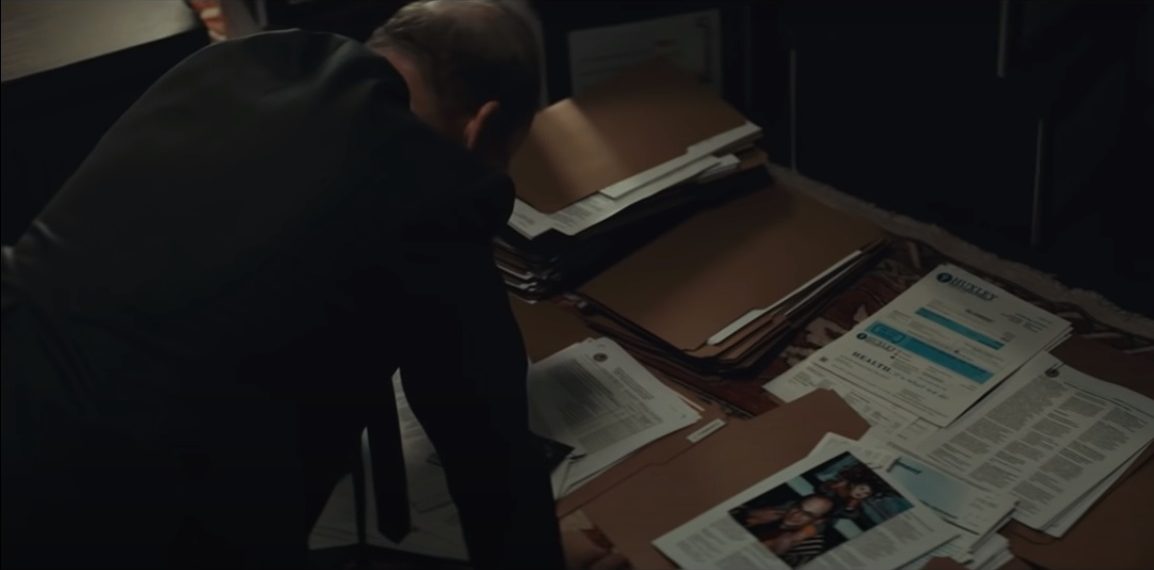
As is repeatedly emphasized in the film, most of the grieving families are not concerned with the amounts being offered but are instead angered by the cold and calculated approach taken by Ken and the government in response to their overwhelming loss. They also see right through the strategy and realize that the fund has been established to save airline companies and not as a sympathetic gesture. Therefore, as Ken realizes near the end, they overwhelmingly want to be treated with dignity and respect, which the attorney finally does by handling each case and its nuances individually instead of merely looking at them in terms of numbers.
Does Charles Wolf Commit to the Fund? What Happens to Fixthefund.org?
In the end, Charles Wolf does sign on to the fund, though he also points out that the typos on the forms have still not been rectified. The empathetic approach employed by Ken near the end makes all the difference and convinces Charles that the attorney is on their side and that he is genuinely listening to the needs of the victims as opposed to putting on a sympathetic face for the benefit of the government.
Another factor that seemingly sways Charles is his deposition with Lee Quinn, the attorney leading the charge for suing the airline companies. Charles realizes that Lee’s motives are much more self-serving and that his only concern is to get as much money as possible for his clients at the expense of the fund failing and many of the victims’ families possibly not receiving any compensation. Compared to that, when Ken admits that he was partly driven by civic duty to do what’s right and begins to look at each victim’s case individually, Charles realizes that the fund should be supported.
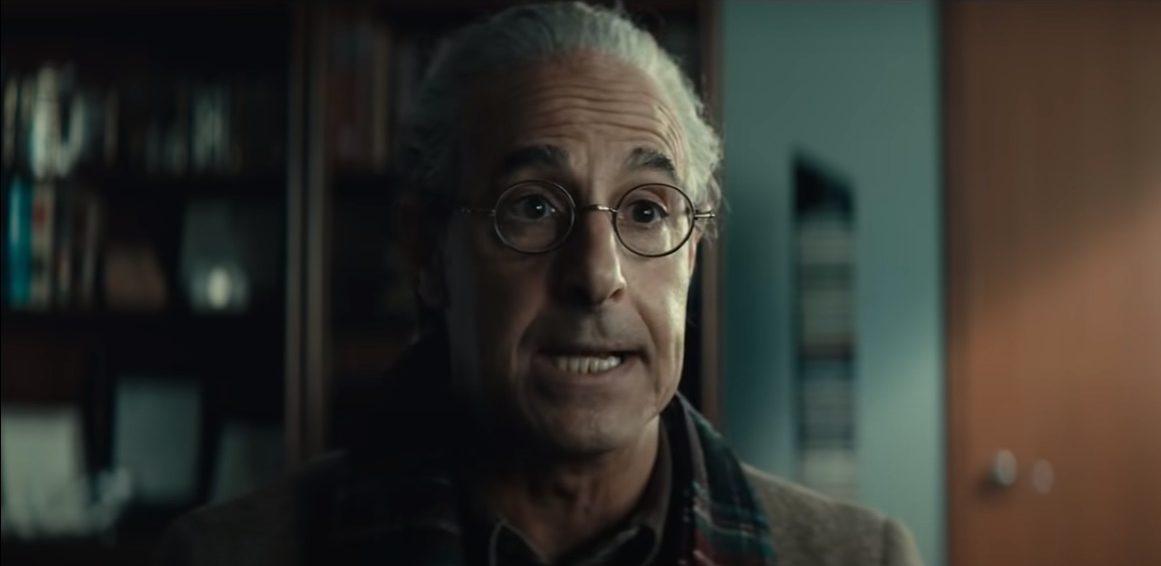
His website, fixthefund.org, is eventually changed to display the title “The Fund is Fixed!” Charles also puts out a message supporting the fund and extolling its empathetic and genuine nature, which results in the 7000 odd people on his mailing list, and possibly many more, forming favorable opinions about the fund. In the end, this turnaround is largely responsible for the fund crossing its 80% benchmark of signatories.
What is Kenneth Feinberg’s Formula? Does He Discard it in the End?
Ken’s formula, which is one of the first aspects of the fund he works on, helps him calculate the monetary value of the compensations that each victim’s family should receive. Seemingly made using life insurance company payables (and possibly other indices), the formula is widely criticized by the grieving families as a cold and discriminatory practice that puts differing values on people depending on their backgrounds. In one scene, we actually see the formula at work with Ken calculating that the family of a CFO that perished in the tragedy would be entitled to over $14 million in compensation, while the family of a janitor would get about $350 thousand.
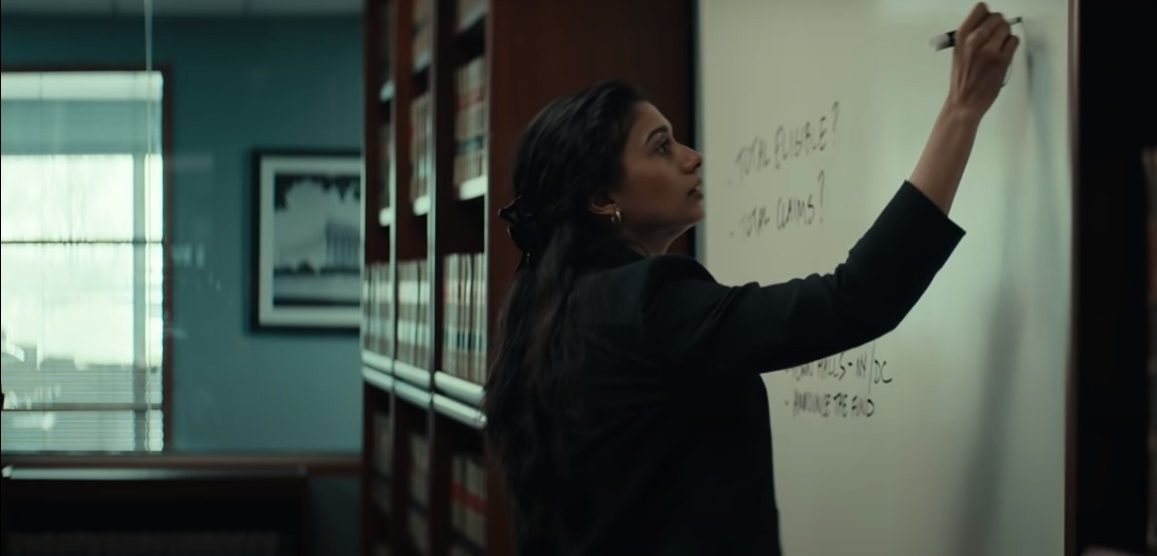
As Ken repeatedly tells his team and anyone who questions his methods, he has a responsibility towards taxpayers (whose money the fund is essentially made of) and therefore has to use a clear and objective method to calculate the payouts. He holds this principle till the end and hence doesn’t discard the formula. However, he also realizes that each case needs to have a personalized approach and begins to examine the victims’ circumstances individually. This involves him attempting to expedite payouts in some cases or even transferring them directly to college tuition accounts for victims’ families that need the money to pay for college.
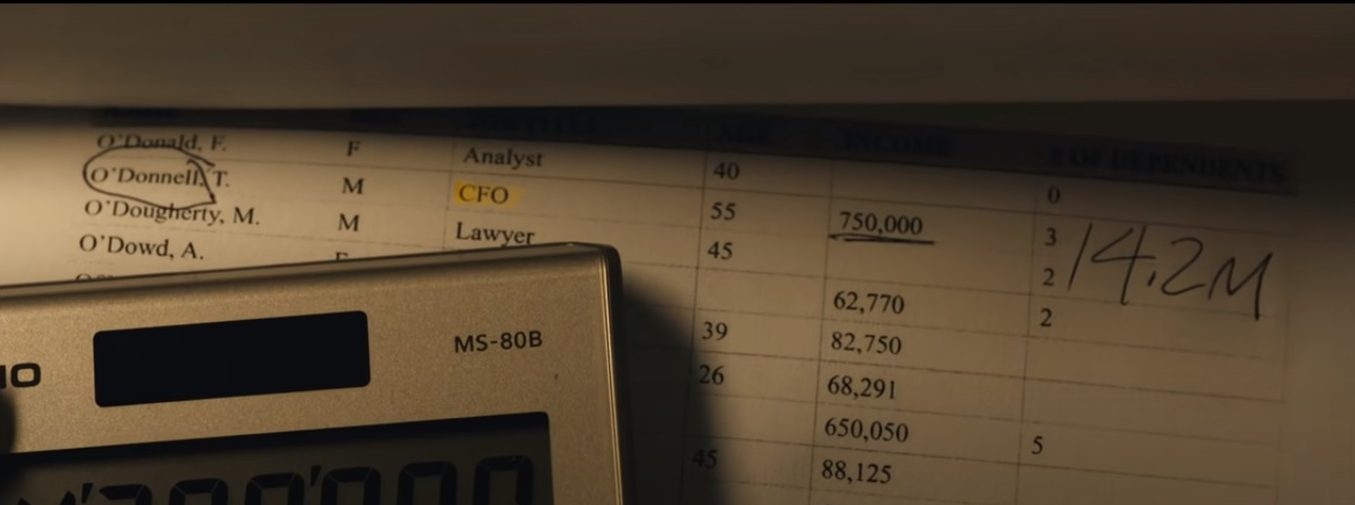
He also looks into the case of Nicholas Donato, a firefighter who was allegedly having an affair and had two daughters with his mistress, and decides to accordingly split the payout so that they are not left without any support. In the end, Ken uses a combination of his formula and personal discretion to make the overwhelmingly difficult decisions that he has to make and still retain the support of the victims’ families.
Read More: Is Netflix’s Worth Based on a True Story?

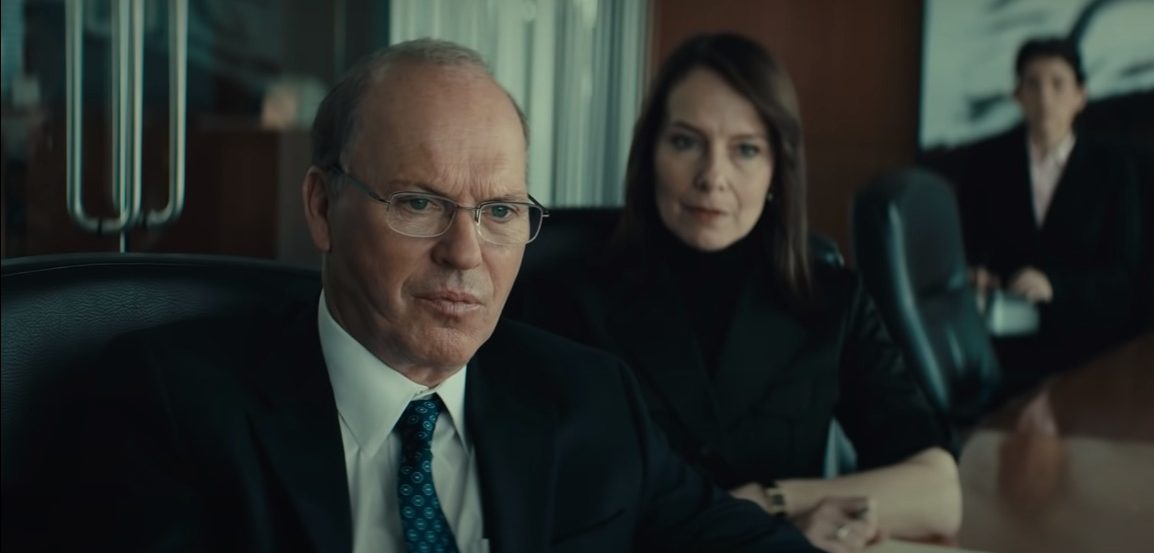
You must be logged in to post a comment.